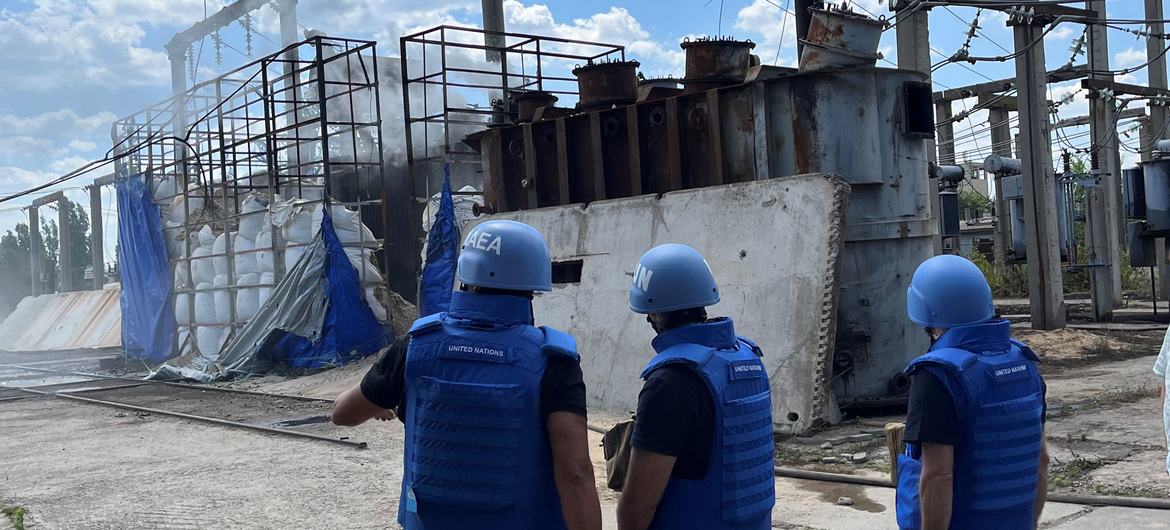- Failure of generators. The
generators are not designed for long-term operation. If they fail or run out of
fuel, the cooling systems of reactors and storage facilities may cease to
function. This could cause nuclear fuel overheating and, in the worst case, a
radioactive release.
- International consequences. Any
radiation release from ZNPP would not be limited to Ukraine – radioactive
particles could spread to neighboring countries, turning the incident into an
international problem.
- Political pressure and an argument for military
aid. Ukraine is actively using the nuclear threat issue in
international discourse as an argument for strengthening air defense systems
and accelerating assistance.
- Russian manipulation. Some observers believe that Russia may be deliberately provoking a crisis in order to tighten its control over the plant and use it as a tool of political leverage.
Nuclear Safety Threat: Zaporizhzhia NPP Cut Off from External Power, IAEA and Ukrainian Experts Sound the Alarm

Ukrainian President Volodymyr
Zelensky once again drew the attention of the international community to the
danger looming over the country’s key nuclear facilities – in particular the
Chornobyl zone and the Zaporizhzhia Nuclear Power Plant (ZNPP). According to
him, due to a series of drone strikes and damage to power transmission lines,
the plant has been completely cut off from external electricity supply, with
emergency diesel generators remaining the only source of power.
The
ZNPP has been under Russian control since the beginning of the full-scale
invasion, but even after being taken out of active generation, it requires
constant power supply to maintain the cooling systems of reactors and spent
fuel storage facilities.
Since
the last disconnection of external power lines, ZNPP has been without external
electricity for more than a week (by some estimates, 6–7 days). Despite
multiple previous outages, none of them lasted this long.
The
plant is currently operating on diesel generators, but they are designed
primarily for emergency backup. The IAEA stresses that such a prolonged
external disconnection is an “unsustainable” situation in terms of nuclear
safety.
IAEA
Director General Rafael Grossi stated that the agency “is cooperating with both
sides of the conflict” to restore external electricity supply as soon as
possible.
“The plant is currently relying on emergency diesel generators – the last line of defense – but this is clearly an unsustainable nuclear safety situation”, Grossi said.
“Ignoring nuclear and radiation safety requirements, shelling of power lines, and obstacles to repairs – all of this may lead to the development of an accident”, noted Oleh Korikov, Head of Ukraine’s State Nuclear Regulatory Inspectorate.
Greenpeace
expert Shaun Burnie described the current outage as “the longest since the
start of Russian occupation”. He also questioned Russian claims that repairs
were impossible: according to satellite imagery, the damage to high-voltage
lines shows no signs of shelling.
Ukrainian
authorities state that Russia is obstructing repair efforts by restricting
access for technical crews and blocking restoration work, increasing the
likelihood of an emergency scenario.
Possible
Scenarios and Risks:
Expert Group CCBS
 Latest news
Latest news Latest news
Latest newsKazakhstan to Fully Transition to Digital Governance: Tokayev Announces Creation of New Ministry
10.Oct.2025
State Duma Denounces Plutonium Disposal Agreement with the United States
09.Oct.2025
U.S. Congressmen Propose Sanctions Against Azerbaijan in Case of New Aggression Against Armenia
08.Oct.2025
Russia Intensifies Strikes on Ukraine’s Energy Sector: Major Thermal Power Plant Damaged
08.Oct.2025
Ukraine Receives €300 Million from the European Investment Bank for Winter Gas Purchases
07.Oct.2025
Canada Ready to Invest Up to $5 Billion in Armenia’s Mining Sector
07.Oct.2025
Municipal Elections in Georgia: Protests, Charges, and Growing Tensions with the EU
06.Oct.2025
Iran’s Parliament Approves Currency Redenomination to Remove Four Zeros from the Rial
06.Oct.2025
Trilateral Meeting of Azerbaijan, Russia, and Iran to Be Held in Baku
05.Oct.2025
Georgia after Municipal Elections: Protests and Political Crisis
04.Oct.2025

 14 Oct 2025
14 Oct 2025








